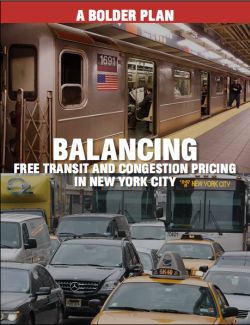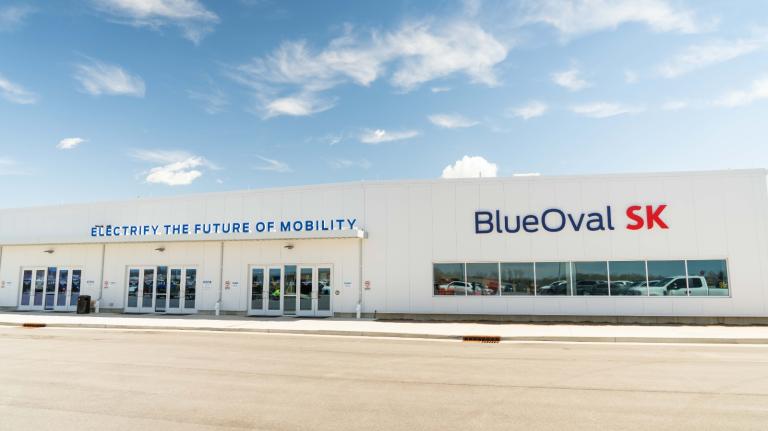 I recently ended 100 days without Grist. And wouldn’t you know, the title of the first post I saw, “No climate for old men,” spoke directly to the reason I was away.
I recently ended 100 days without Grist. And wouldn’t you know, the title of the first post I saw, “No climate for old men,” spoke directly to the reason I was away.
No, I wasn’t with the McCain campaign. Rather, I was immersed in a project, spearheaded by a really old man, that could become a terrific tool for beating back the climate crisis.
That man is 93-year-old Ted Kheel, legendary New York labor-lawyer-turned-environmentalist. His project is a study of the feasibility of financing free mass transit in New York City through congestion pricing and other charges on driving. I directed the study (PDF), which has just been released, and I think its implications could be huge, not just for New York but for every city in the U.S. and around the world.
Our analysis indicates that Kheel’s combination of carrot (free buses, subways, and in-city commuter rail) and stick (hefty fees to drive into Manhattan south of Central Park) would work these wonders:
- twenty-five percent less traffic within the Manhattan core, and 9 percent less citywide
- an increase in person-traffic, as growth in transit trips more than offsets the drop in auto trips
- less-crowded transit, as some current subway riders shift to biking (helped by less traffic) and parallel bus and commuter rail routes (made free and faster)
- huge gains in recovered productivity from saving over a hundred million “vehicle hours” a year that are now wasted in traffic
- an annual revenue infusion of almost half a billion dollars to upgrade and expand transit
- vast new public space in the heart of the city (from reserving half of the new “traffic lanes” effectively minted by the traffic reduction)
- environmental and health benefits from decreased driving and increased walking and bicycling.
Helping build these impressive benefits is a set of gorgeous synergies, like this one involving transit buses: under the Kheel Plan, as we call it, when you get on a bus, you don’t have to pay a fare. Not only is that nice for you, but it speeds up everybody’s ride — no more fumbling at the door for your fare card. This in turn makes the buses more attractive to people who might otherwise drive or take cabs, which makes for less traffic, which speeds bus travel and attracts still more riders. Where will the buses come from to handle the load? They’re here now; the numbers tell us that buses will be able to make six runs in the time it now takes them to do five.
Ah, the numbers. The mammoth job of putting them together is what forced me off Grist (and other fun stuff) for months. To trace the simultaneous impacts of free transit and driving fees, we built an ingenious computer model that accounts for interactions between traffic volumes and speeds, and captures the effect of price changes and time savings on travel choices (transit, auto, taxi, and bike). The model is actually a computer spreadsheet with 30 linked compartments passing thousands of parameters (numbers) and equations back and forth. Yet it’s fully transparent. All assumptions are revealed, and users are enabled to make their own pricing choices. Hey you math heads and policy wonks out there, download the spreadsheet and have a look!
While this work was going on, we were racing the clock. As even many non-New Yorkers know, last year Mayor Michael Bloomberg proposed his own milder congestion pricing plan ($8 car entry fee instead of our $16; no letup in transit fare hikes), touching off a legislative forced march to satisfy a federal funding deadline. Although the Kheel Plan was a bit too revolutionary to get considered in this round, we’ve succeeded in placing it in the civic consciousness. Whether Bloomberg’s plan is enacted or not, we have a shot at making free transit a big issue in the 2009 municipal elections.
What does the Kheel Plan have to do with rescuing the climate? Not what you might think — the direct CO2 savings from the drop in driving are modest, just a few percent of total citywide emissions. The Kheel Plan’s climate benefits arise from making New York City vital and livable enough to accommodate new residents and businesses that would otherwise gravitate to suburbs that don’t share the city’s structural bias toward carbon efficiency. Needless to say, blazing a path for other world cities could multiply those climate benefits a hundred-fold.
I turned 60 last year. Once or twice, contemplating the climate crisis, I’ve had to pull myself back from thinking, “At least I won’t be around when it all hits the fan.” But here’s Ted Kheel, burning through his 90s, pouring heart and soul into a vision that he may not be around to see made real.
Maybe the climate is something for old men after all.
To download the Kheel Report and spreadsheet, go to www.nnyn.org/kheelplan.



